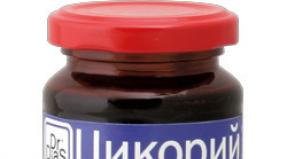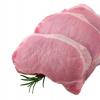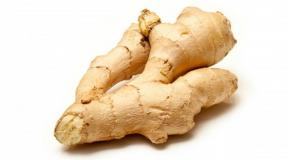Reference book of medicines. Medicinal reference book geotar Levomepromazine release form
Nozinan, Dedoran, Levomasin, Levopromazine, Minosinan, Neosin, Neuractil, Neurocil, Sinogan, Veractyl, Methotrimeprazine,
Recipe (international)
Rep: Sol. Levomepromazini 2.5% 1ml
D.t.d: #10 in amp.
S: 1-2 ml intramuscularly 2 times a day, increasing the dose to 101 per day.
pharmachologic effect
Blocks dopamine receptors of various brain structures (including mesolimbic, mesocortical). Reduces the productive symptoms of psychosis - delirium, hallucinations, psychomotor agitation. It has pronounced adrenoblocking, moderate anticholinergic and antihistamine properties. It has an analgesic effect.
It is quickly and completely absorbed by any route of administration. Cmax is achieved 1–3 hours after oral administration and 0.5–1.5 hours after intramuscular injection. It passes through histohematic barriers, including the BBB, and is distributed in organs and tissues. Intensively biotransformed. The main active metabolite is N-desmethylmono-methotrimeprazine, which later turns into monosulfoxide. T1 / 2 levomepromazine - 16-78 hours. Excreted mainly as metabolites in the urine and bile.
Mode of application
For adults: Inside, in / m, in / in. The relief of excitation begins with parenteral administration of 25–75 mg, if necessary, up to 200–250 mg intramuscularly or 75–100 mg intravenously. Gradually switch to oral administration of 50-100 mg per day (if necessary, up to 400 mg). In outpatient practice, 12.5–50.0 mg per day is prescribed orally.
Indications
psychomotor agitation various etiologies(for acute and chronic schizophrenia, bipolar disorder, psychosis, including senile, intoxication, oligophrenia, epilepsy), as well as others mental disorders flowing with agitation, anxiety, panic, phobias, persistent insomnia. Strengthening the action of analgesics, drugs for general anesthesia, antihistamines). Pain syndrome in trigeminal neuralgia and neuritis of the facial nerve, herpes zoster.
Contraindications
Hypersensitivity, concomitant use of antihypertensive drugs; overdose of drugs that cause CNS inhibition (alcohol, general anesthetics, sleeping pills), angle-closure glaucoma, urinary retention, Parkinson's disease, multiple sclerosis, myasthenia gravis, hemiplegia, chronic heart failure in the stage of decompensation, severe renal and / or liver failure, severe arterial hypotension, depression of bone marrow hematopoiesis, porphyria, pregnancy, breastfeeding, childhood up to 12 years old.
Side effects
From the side of the cardiovascular system and blood (hematopoiesis, hemostasis): decreased blood pressure, orthostatic hypotension, tachycardia, Morgagni-Adams-Stokes syndrome, prolongation of the QT interval (arrhythmogenic effect, tachycardia of the "pirouette" type) (see also "Restrictions for use ”), pancytopenia, agranulocytosis, leukopenia, eosinophilia, thrombocytopenia.
From the side nervous system and sensory organs: confusion, slurred speech, extrapyramidal symptoms with a predominance of akinetic-hypotonic syndrome, epileptic seizures, increased intracranial pressure, neuroleptic malignant syndrome (NMS); at long-term use- deposits in the lens and cornea, pigmentary retinopathy.
From the digestive tract: dry mouth, constipation, discomfort in the abdomen, nausea, vomiting, liver damage (jaundice, cholestasis).
Allergic reactions: laryngeal edema, peripheral edema, anaphylactoid reactions, bronchospasm, urticaria, exfoliative dermatitis.
Miscellaneous: Urine discoloration, micturition disorder, galactorrhea, impaired menstrual cycle, weight loss, increased photosensitivity, erythema, pigmentation, hyperthermia (may be the first sign of NZS), pain and swelling at the injection site. Pituitary adenoma has been described in some patients receiving long-term phenothiazines, but more research is needed to establish a causal relationship with these drugs.
Release form
Dragee 0.025 g; 2.5% solution in amp. 1 ml.
ATTENTION!
The information on the page you are viewing was created for informational purposes only and does not promote self-treatment in any way. The resource is designed to familiarize healthcare professionals with additional information about certain medicines, thereby increasing their level of professionalism. The use of the drug Levomepromazine"mandatory provides for a consultation with a specialist, as well as his recommendations on the method of application and dosage of the medicine you have chosen.
Catad_pgroup Anxiolytics (tranquilizers)
Tizercin solution - instructions for use
Registration number:
P N012432/01-20.09.2011Tradename:
TISERCIN ®International non-proprietary name:
levomepromazineDosage form:
solution for infusion and intramuscular injectionCompound:
active substance: levomepromazine 25 mg,
Excipients: anhydrous citric acid 9 mg, monothioglycerol 7.5 mg, sodium chloride 6 mg, water for injection up to 1 ml.
Description:
Colorless or slightly colored transparent solution with a characteristic odor.
Pharmacotherapeutic group:
antipsychotic (neuroleptic)ATX code: N05A A02
Pharmacological properties
Pharmacodynamics:
Antipsychotic agent (neuroleptic) of the phenothiazine series. It has an antipsychotic, sedative (hypnotic), analgesic, moderate antiemetic, hypothermic, moderately blocks H1-histamine and M-cholinergic receptors. Causes a decline blood pressure(HELL).
The antipsychotic effect is due to the blockade of dopamine D2 receptors of the mesolimbic and mesocortical systems.
The sedative effect is due to the blockade of adrenoreceptors of the reticular formation of the brain stem; antiemetic action - blockade of dopamine D2 receptors of the trigger zone of the vomiting center; hypothermic action - blockade of dopamine receptors of the hypothalamus.
Extrapyramidal side effects in levomepromazine, they are less pronounced than in "typical" antipsychotics. Levomepromazine increases the pain threshold. Due to the ability to enhance the effects of non-narcotic analgesics, this drug can be used for adjuvant therapy in acute and chronic pain syndrome.
The maximum analgesic effect develops within 20-40 minutes after i / m administration and lasts approximately 4 hours.
Pharmacokinetics:
After intramuscular injection, the maximum concentration in blood plasma is reached after 30-90 minutes. Passes through histohematological barriers, including the blood-brain barrier, distributed in organs and tissues.
Levomepromazine is rapidly metabolized in the liver by demethylation to form conjugates with sulfuric or glucuronic acid, which are excreted in the urine. The metabolite formed as a result of demethylation (N-desmethylmonomethotrimeprazine) has pharmacological activity, the remaining metabolites are inactive. A small part of the administered dose (1%) is excreted unchanged in the urine and feces. The half-life is 15-30 hours.
Indications for use:
Psychomotor agitation of various etiologies:
- in schizophrenia (acute and chronic)
- in bipolar disorder
- with senile, intoxication and other psychoses
- with oligophrenia
- with epilepsy
- agitation
- anxiety
- panic
- phobias
- persistent insomnia
Pain syndrome (neuralgia trigeminal nerve, neuritis of the facial nerve, herpes zoster).
Contraindications:
- concomitant use of antihypertensive drugs,
- hypersensitivity to the components of the drug and phenothiazine derivatives,
- overdose of drugs that cause inhibition of the central nervous system (alcohol, drugs for general anesthesia, sleeping pills),
- angle-closure glaucoma,
- urinary retention,
- Parkinson's disease,
- multiple sclerosis,
- myasthenia gravis, hemiplegia,
- chronic heart failure in the stage of decompensation,
- severe renal/liver failure,
- severe arterial hypotension, inhibition of bone marrow hematopoiesis (granulocytopenia),
- porphyria,
- lactation,
- children's age up to 12 years.
CAREFULLY
Epilepsy, patients with a history of cardiovascular disease, especially in old age (disorders in the conduction of the heart muscle, arrhythmias, congenital long QT interval syndrome). Pregnancy and lactation
Pregnancy and lactation
The drug should not be used during pregnancy, unless a careful comparison of the risk to the fetus and the benefit to the mother has been carried out. Levomepromazine penetrates into breast milk. In this regard, and in the absence of controlled studies, its use in breastfeeding contraindicated.
If necessary, take the drug during lactation, you should decide whether to stop breastfeeding.
Dosage and administration:
parenteral administration used when it is impossible to take the drug inside. The usual daily dose is 75-100 mg (for 2-3 injections) under bed rest under the control of blood pressure and pulse. If necessary, the daily dose is increased to 200-250 mg.
When administered intramuscularly, the drug should be injected deep into the muscle.
Intravenous drip infusions are also used, for which the drug Tizercin ® should breed(50 - 100 mg of the drug in 250 ml of 0.9% sodium chloride solution or 5% dextrose (glucose)) and inject slowly through a drip.
Clinical experience with the parenteral use of levomepromazine in children under 12 years of age is insufficient.
In the presence of strict indications for children over 12 years of age, doses from 0.35 mg / kg / day to 3.0 mg / kg / day are recommended.
Side effect
From the side of the cardiovascular system:
decrease in blood pressure, orthostatic hypotension (with concomitant weakness, dizziness and loss of consciousness), Adams-Stokes syndrome, tachycardia, prolongation of the QT interval (arrhythmogenic effect, pirouette-type arrhythmia) (see section " special instructions"). When taking neuroleptics of the phenothiazine series, there were cases sudden death(possibly due to cardiac causes).
From the circulatory and lymphatic systems:
pancytopenia, agranulocytosis, leukopenia, thrombocytopenia, eosinophilia.
From the side of the central nervous system:
drowsiness, dizziness, increased fatigue, confusion, slurred speech, visual hallucinations, catatonia, disorientation, extrapyramidal symptoms with a predominance of akineto-hypotonic syndrome (dyskinesia, dystonia, parkinsonism, opisthotonus, hyperreflexia), epileptic seizures, increased intracranial pressure, neuroleptic malignant syndrome (ZNS) (see also the section "Special Instructions").
From the side of metabolism:
weight loss, galactorrhea, menstrual disorders, mastalgia. Pituitary adenomas have been reported in some patients receiving phenothiazine derivatives, but more research is needed to establish a causal relationship between the use of these drugs and tumor development.
From the reproductive and urinary system:
difficulty urinating, discoloration of urine, violation of contractions of the uterine muscles.
From the gastrointestinal tract:
vomiting, nausea, constipation, discomfort in the abdomen, dry mouth, liver damage (jaundice, cholestasis).
From the side of the skin:
exfoliative dermatitis, urticaria, erythema, photosensitivity, hyperpigmentation.
From the side of the organs of vision:
retinopathy pigmentosa, deposits in the lens and cornea.
Allergic reactions:
laryngeal edema, peripheral edema, anaphylactoid reactions, bronchospasm, urticaria, exfoliative dermatitis.
Other: hyperthermia (may be the first sign of NMS), pain and swelling at the injection sites.
Overdose
Symptoms: decrease in blood pressure, hyperthermia, conduction disturbances in the heart muscle (prolongation of the QT interval, ventricular tachycardia of the "pirouette" type, atrioventricular blockade), depression of consciousness varying degrees severity (up to coma), extrapyramidal symptoms, sedation, epileptic seizures, neuroleptic malignant syndrome.
Treatment: It is recommended to monitor the following indicators: acid-base balance, fluid and electrolyte balance, kidney function, urine volume, liver enzyme activity, ECG readings, and in patients with neuroleptic malignant syndrome, additional serum CPK levels and body temperature. Symptomatic treatment should be carried out on the basis of the results of the assessment of the above parameters. In the case of a decrease in blood pressure, intravenous fluid replacement, the Trendelenburg position, the use of dopamine and / or norepinephrine are indicated. (In view of the pro-arrhythmogenic effect of levomepromazine, it is necessary to provide conditions for resuscitation, and with the introduction of dopamine and / or norepinephrine - ECG). In case of an overdose of neuroleptics, it is not recommended to use epinephrine (adrenaline).
The use of lidocaine (lignocaine) and, if possible, arrhythmic drugs should also be avoided. long-acting.
Diazepam is used to eliminate seizures or, with relapses seizures, phenytoin or phenobarbitone. If rhabdomyolysis occurs, mannitol is prescribed.
There is no specific antidote.
Forced urination, hemodialysis and hemoperfusion are ineffective.
convulsions, dystonic reactions of the muscles of the head and neck can lead to the ingress of vomit into Airways. Gastric lavage, along with the control of vital signs, is indicated even 12 hours after taking the drug, since its natural emptying is slow due to the m-anticholinergic action of levomepromazine. An additional reduction in the absorption of the drug is achieved by the use of activated charcoal and laxatives.
Interaction with other drugs
The simultaneous use of levomepromazine and the following agents should be avoided:
- Antihypertensive drugs due to the risk of a pronounced decrease in blood pressure.
- Monoamine oxidase (MAO) inhibitors, tk. it is possible to increase the duration of action of levomepromazine and increase the severity of its side effects.
- Means with m-anticholinergic activity (tricyclic antidepressants; H1-histamine receptor blockers; some antiparkinsonian drugs; atropine, scopolamine, suxamethonium) increase the m-anticholinergic effect of levmepromazine (paralytic ileus, urinary retention, glaucoma). With simultaneous use with scopolamine, extrapyramidal side effects were observed.
- CNS depressants (narcotic analgesics, general anesthetics, anxiolytics, sedatives and sleeping pills, tranquilizers, tricyclic antidepressants), enhance the inhibitory effect of levomepromazine on the central nervous system.
- CNS stimulants (for example, amphetamine derivatives): levomepromazine reduces their psychostimulant effect.
- Levodopa: Levomepromazine weakens the effect of levodopa.
- Oral hypoglycemic agents: when used simultaneously with levomepromazine, their effectiveness decreases, which requires dose adjustment.
- Drugs that prolong the QT interval (certain antiarrhythmic drugs, macrolide antibiotics, some azole antifungals, cisapride, some antidepressants, some antihistamines, and diuretics that reduce blood potassium levels) increase the risk of QT interval prolongation and therefore increase the risk of arrhythmias .
- Drugs that cause photosensitivity, when used simultaneously with levomepromazine, increase the likelihood of photosensitivity.
- Alcohol enhances CNS inhibition and increases the likelihood of extrapyramidal side effects when used simultaneously with levomepromazine.
- Antacids reduce absorption in gastrointestinal tract(levomepromazine should be administered 1 hour before or 4 hours after taking antacids).
- Drugs that inhibit bone marrow hematopoiesis increase the risk of myelosuppression.
- Dilevalol, like levomepromazine, inhibits metabolism, which leads to a mutual enhancement of the action of both medicines. In the case of their simultaneous use, it may be necessary to reduce the dosages of one or both drugs. A similar interaction with other beta-blockers is not excluded.
- Levomepromazine and its non-hydroxylated metabolites are potent inhibitors of cytochrome P450 2D6. Joint application levomepromazine with medicines metabolized primarily by cytochrome P450 2D6 may lead to an increase in the concentration of these drugs, which may increase the undesirable effects of these drugs.
special instructions
The use of the drug should be discontinued in case of allergic reactions.
Simultaneous use with drugs that depress the central nervous system, MAO inhibitors and m-anticholinergics requires special care (see section "Interaction with other drugs").
It should be used with extreme caution in patients with impaired liver and / or kidney function.
Elderly patients have a predisposition to orthostatic hypotension, as well as m-anticholinergic and sedative effects of phenothiazines. In addition, they especially often have extrapyramidal side effects. Therefore, the treatment of these patients should be started with low doses with a gradual increase.
Older people with dementia who were treated with antipsychotics had a small increased risk of mortality. Data are insufficient to determine the exact magnitude of the risk, and the cause of this increased risk is unknown. Tizercin® is not approved for use in the treatment of behavioral disorders associated with dementia.
To avoid the development of orthostatic hypotension, the patient should lie down for half an hour after the first dose. If dizziness occurs after the administration of the drug, bed rest should be observed after the administration of each dose until the dizziness disappears.
In cases of parenteral administration of the drug Tizercin®, if necessary, alternate injection sites, since the drug can cause local irritation and tissue damage.
Care must also be taken when prescribing the drug to patients (especially the elderly) with a history of cardiovascular disease, patients with congestive heart failure, conduction disorders, arrhythmia, congenital long QT interval syndrome. Before starting treatment with Tizercin®, an ECG should be performed to rule out any cardiovascular disorder that may contraindicate the use of the drug.
There are reports of prolongation of the QT interval, the occurrence of arrhythmias and, very rarely, torsades de pointes arrhythmias during phenothiazine therapy (see section "Side Effects").
If hyperthermia occurs during antipsychotic therapy, the possibility of neuroleptic malignant syndrome (NMS) should be excluded. This potentially life-threatening syndrome is characterized by the following symptoms: muscle rigidity, hyperthermia, confusion, dysfunction of the autonomic nervous system (unstable blood pressure, tachycardia, arrhythmia, increased sweating), catatonia, increased activity of creatine phosphokinase (CPK), myoglobinuria (rhabdomyolysis) and acute kidney failure. If they occur, and also if hyperthermia occurs during treatment unclear etiology without the rest clinical symptoms NMS, the use of the drug Tizercin ® should be discontinued immediately.
After a sudden withdrawal of the drug, used in high doses or for a long time, the following may occur: nausea, vomiting, headache, tremor, increased sweating, tachycardia, insomnia and anxiety, as well as the development of tolerance to the sedative effect of phenothiazine derivatives and cross-tolerance to various antipsychotics. For this reason, drug withdrawal should always be done gradually.
Many antipsychotics, including levomepromazine, can lower the seizure threshold and cause epileptiform ECG changes. For this reason, when titrating the dose of the drug Tizercin ®, all patients with epilepsy must ensure careful clinical observation and ECG monitoring.
The development of cholestatic jaundice depends on the individual sensitivity of the patient and completely disappears after discontinuation of the drug. Therefore, with long-term treatment, regular monitoring of liver function is required.
Agranulocytosis and leukopenia have been reported in some patients receiving phenothiazines.
Despite the rarity of such cases, with long-term therapy with levomepromazine, it is necessary to regularly monitor the leukocyte count of the blood.
During treatment and until the termination of the drug (within 4-5 days after discontinuation of the drug), alcohol consumption is prohibited.
Before and during treatment, it is recommended to regularly monitor the following indicators: blood pressure, liver function (especially in patients with liver disease), leukocyte formula blood, ECG (with cardiovascular diseases and in elderly patients), the concentration of potassium in the blood serum. It is necessary to periodically monitor the level of electrolytes in the blood and its correction (especially when planning long-term therapy).
Influence on the ability to control vehicles and work with mechanisms
At the beginning of treatment (during the period, the duration of which depends on the patient's response), it is forbidden to drive a car and perform work associated with an increased risk of accidents. Subsequently, the severity of the prohibition is determined individually for each patient.
Release form:
Solution for infusion and intramuscular injection 25 mg/ml.
1 ml in colorless type I hydrolytic glass ampoules, with red and blue code rings and a break point.
5 ampoules in a blister pack, sealed with a film, made of PVC//PET/PE.
2 blisters in a carton box along with instructions for use.
Best before date:
2 years. Do not use the drug after the expiration date indicated on the package.Storage conditions:
In a place protected from light at a temperature not exceeding 25 ° C.Keep out of the reach of children.
Conditions for dispensing from pharmacies:
On prescription.Manufacturer
CJSC Pharmaceutical Plant EGIS,
1106 Budapest, st. Keresturi, 30-38 HUNGARY
Representative office of CJSC "Pharmaceutical Plant EGIS" (Hungary), Moscow
121108, Moscow, st. Ivan Franko, d. 8.
Catad_pgroup Antipsychotics (Neuroleptics)
Tizercin tablets - instructions for use
Registration number:
ПN011307/01-25.02.2010Trade name of the drug:
INN:
levomepromazineDosage form:
coated tabletsCompound:
active substance: 25 mg levomepromazine (equivalent to 33.8 mg levomepromazine hydromaleate),
Excipients: magnesium stearate 1 mg, sodium starch glycolate 2 mg, povidone 8 mg, microcrystalline cellulose 10 mg, potato starch 15.2 mg, lactose 40 mg, tablet shell: titanium dioxide 0.758 mg, hypromellose 2.632 mg, dimethicone 0.355 mg, magnesium stearate 0.255 mg.
Description:
Round, slightly biconvex film-coated tablets, white, odorless
Pharmacotherapeutic group:
antipsychotic (neuroleptic)ATX code: N05AA02
Pharmacological properties
Pharmacodynamics:
Antipsychotic agent (neuroleptic) of the phenothiazine series. It has antipsychotic, sedative (hypnotic), analgesic, moderate antiemetic, hypothermic, moderate antihistamine and M-anticholinergic effects. Causes a decrease in blood pressure (BP).
The antipsychotic effect is due to the blockade of dopamine D2 receptors of the mesolimbic and mesocortical systems.
The sedative effect is due to the blockade of adrenoreceptors of the reticular formation of the brain stem; antiemetic action - blockade of dopamine D2 receptors of the trigger zone of the vomiting center; hypothermic action - blockade of dopamine receptors of the hypothalamus.
Extrapyramidal side effects in levomepromazine are less pronounced than in the "classic" antipsychotics. Levomepromazine increases the pain threshold. Due to the ability to enhance the effects of analgesics, this drug can be used for adjuvant therapy in acute and chronic pain syndrome.
Pharmacokinetics:
The maximum concentration of the drug in the blood plasma is reached 1-3 hours after ingestion. Passes through histohematological barriers, including the blood-brain barrier, distributed in organs and tissues.
Levomepromazine is rapidly metabolized in the liver by demethylation to sulfate and glucuronide conjugates, which are excreted in the urine. The metabolite formed as a result of demethylation (N-desmethylomono-methotrimeprazine) has pharmacological activity, the remaining metabolites are inactive. A small part of the administered dose (1%) is excreted unchanged in the urine and feces. The half-life is 15-30 hours.
Indications for use:
Psychomotor agitation of various etiologies:
- in schizophrenia (acute and chronic)
- in bipolar disorder
- with senile, intoxication and other psychoses
- with oligophrenia
- with epilepsy
- agitation
- anxiety
- panic
- phobias
- persistent insomnia
Pain syndrome (trigeminal neuralgia, neuritis of the facial nerve, herpes zoster).
Contraindications:
- concomitant use of antihypertensive drugs,
- hypersensitivity to phenothiazines,
- overdose of drugs that cause CNS inhibition (alcohol, general anesthetics, sleeping pills),
- angle-closure glaucoma,
- urinary retention,
- Parkinson's disease,
- multiple sclerosis,
- myasthenia gravis, hemiplegia,
- chronic heart failure in the stage of decompensation,
- severe renal/liver failure,
- severe arterial hypotension,
- oppression of bone marrow hematopoiesis (granulocytopenia),
- porphyria,
- lactation,
- children's age up to 12 years.
Carefully: epilepsy, patients with a history of cardiovascular disease, especially in the elderly (conduction disorders of the heart muscle, arrhythmias, congenital long QT interval syndrome).
Pregnancy and lactation
Pregnancy
The drug should not be used during pregnancy, unless a careful comparison of the risk to the fetus and the benefit to the mother has been carried out.
Lactation
Levomepromazine passes into breast milk. In this regard, and in the absence of controlled studies, its use during breastfeeding is contraindicated. If necessary, take the drug during lactation, you should decide whether to stop breastfeeding.
Dosage and administration:
Inside, starting with a daily dose of 25-50 mg in several doses (the maximum part of the daily dose should be given at bedtime), increasing it daily by 25-50 mg until the patient's condition improves. In patients resistant to other antipsychotics, the daily dose can be increased more rapidly by adding 50-75 mg per day. Average daily doses are 200-300 mg.After the patient's condition improves, the dose should be reduced to a maintenance dose, the value of which is determined individually.
In outpatient practice, patients with neurotic disorders are prescribed in daily dose 12.5-50 mg (1/2-2 tablets).
Patients with psychosis, with severe psychomotor agitation, it is advisable to start therapy with levomepromazine from parenteral administration.
To prevent the development of orthostatic collapse during treatment, bed rest is required.
Side effect
The cardiovascular system:
the most common side effect is a decrease in blood pressure and orthostatic hypotension. Tachycardia, Morgagni-Adams-Stokes syndrome, prolongation of the QT interval (arrhythmogenic effect, tachycardia of the "pirouette" type) are also possible (see also the "Contraindications" section).
Hematopoietic system:
pancytopenia, agranulocytosis, leukopenia, eosinophilia, thrombocytopenia.
Central nervous system:
confusion, slurred speech, extrapyramidal symptoms with a predominance of akineto-hypotonic syndrome, epileptic seizures, increased intracranial pressure, neuroleptic malignant syndrome (NMS).
Endocrine system and metabolism:
galactorrhea, menstrual disorders, weight loss. Pituitary adenoma has been described in some patients receiving long-term phenothiazines, but more research is needed to establish a causal relationship with these drugs.
Urogenital system:
discoloration of urine, urination disorders.
Gastrointestinal tract:
dry mouth, discomfort in the abdomen, nausea, vomiting, constipation, liver damage (jaundice, cholestasis).
Skin reactions: photosensitivity, erythema, pigmentation.
Vision: with prolonged use, deposits in the lens and cornea, retinopathy pigmentosa.
Allergic reactions:
laryngeal edema, peripheral edema, anaphylactoid reactions, bronchospasm, urticaria, exfoliative dermatitis.
Others: hyperthermia (may be the first sign of NZS), pain and swelling at the injection sites.
Overdose:
Symptoms:
Arterial hypotension, conduction disturbances in the heart muscle (prolongation of the QT interval, ventricular tachycardia of the "pirouette" type, atrioventricular blockade), depression of consciousness of varying severity (up to coma), extrapyramidal symptoms, sedation, epileptic seizures.
Treatment:
resuscitation, symptomatic therapy. The specific antidote is not known. Forced diuresis, hemodialysis and hemoperfusion are not effective.
Interaction with other drugs
The concomitant use of the following should be avoided:
- Antihypertensive due to the risk of a pronounced decrease in blood pressure.
- MAO monoamine oxidase inhibitors, because it is possible to increase the duration of the effect of the drug Tizercin and the severity of its side effects.
- Anticholinergic drugs(tricyclic antidepressants; H1-histamine receptor blockers; some antiparkinsonian drugs; atropine, scopolamine, succinylcholine) due to increased anticholinergic effects (paralytic ileus, urinary retention, glaucoma). When combined with scopolamine, extrapyramidal side effects were observed.
- CNS depressants(narcotic analgesics, general anesthesia, anxiolytics, sedatives and hypnotics, tranquilizers, tricyclic antidepressants) enhance the inhibitory effect of the drug on the central nervous system.
- CNS Stimulants(for example, amphetamine derivatives) - a decrease in the psychostimulating effect.
- Levodopa: the effect of this drug is weakened.
- Oral antidiabetic drugs: their effectiveness is reduced, which requires dose adjustment.
- Medications that prolong the QT interval(certain antiarrhythmic drugs, macrolide antibiotics, some antifungal azoles, cisapride, some antidepressants, some antihistamines, and potassium-lowering diuretics) - increase the risk of QT interval prolongation and therefore increase the risk of arrhythmia.
- Drugs that cause photosensitivity: this effect may increase.
- Alcohol: the inhibition of the central nervous system increases and the likelihood of extrapyramidal side effects increases.
- Antacids: reduce absorption in the gastrointestinal tract (levomepromazine should be administered 1 hour before or 4 hours after taking antacids).
special instructions
The drug should be discontinued if allergic reactions.
In pregnancy, the drug should be prescribed after a careful comparison of risk and benefit (see section "Pregnancy and lactation").
Simultaneous use with drugs that depress the central nervous system, MAO inhibitors and anticholinergic substances requires special care (see the "Interactions" section).
Particular care is needed when prescribing drugs to patients with renal and / or hepatic insufficiency due to the risk of cumulation of the drug.
Elderly patients are prone to orthostatic hypotension, as well as the anticholinergic and sedative effects of phenothiazines. In addition, they especially often have extrapyramidal side effects. Therefore, low initial doses and their gradual increase are especially important in this category of patients.
To avoid the development of orthostatic hypotension, the patient should lie down for half an hour after the first dose. If dizziness occurs after the administration of the drug, bed rest should be observed after the administration of each dose.
If hyperthermia occurs during antipsychotic therapy, neuroleptic malignant syndrome (NMS) must be ruled out. NZS - deadly dangerous disease, characterized by the following symptoms: hyperthermia, muscle rigidity, confusion, dysfunction of the autonomic nervous system (unstable blood pressure, tachycardia, arrhythmia, increased sweating), increased concentrations of creatine phosphokinase (CPK), myoglobinuria (rhabdomyolysis) and acute renal failure. If they occur, and if hyperthermia of unknown etiology occurs during treatment without other clinical symptoms of NZS, the administration of the drug Tizercin ® should be stopped immediately.
After a sudden withdrawal of the drug, used in high doses or for a long time, the following may occur: nausea, vomiting, headache, tremor, increased sweating, tachycardia, insomnia and anxiety, as well as the development of tolerance to the sedative effects of phenothiazines and cross-tolerance to various antipsychotics. For this reason, drug withdrawal should always be done gradually.
Many antipsychotics, including levomepromazine, can lower the seizure threshold and cause epileptiform EEG changes. Therefore, when selecting a dose of Tizercin in patients with epilepsy, clinical parameters and EEG should be constantly monitored.
The development of cholestatic jaundice depends on the individual sensitivity of the patient and completely disappears after the drug is discontinued. Therefore, with long-term treatment, regular monitoring of liver function is required.
The use should be banned alcoholic beverages during treatment and until the effects of the drug disappear (within 4-5 days after stopping the administration of the drug Tizercin ® .
- arterial pressure,
- liver function (especially in patients with liver disease),
- blood formula,
- ECG (for cardiovascular diseases and in elderly patients).
Driving cars and working with mechanisms
During the treatment period, you should refrain from driving a car and performing work associated with an increased risk of accidents.
Release form
Film-coated tablets 25 mg.50 tablets in a brown glass bottle with a PE cap, with a first opening control and an accordion shock absorber.
1 bottle with instructions for use in a cardboard box.
Shelf life
5 years.Do not use after the expiry date stated on the packaging.
Storage conditions
The drug belongs to the list number 1 potent substances Standing Committee for Drug Control of the Ministry of Health of the Russian Federation.Store at a temperature of 15-25 ° C, out of the reach of children.
Terms of dispensing from pharmacies
By prescription!Manufacturer
CJSC Pharmaceutical Plant EGIS,1106 Budapest, st. Keresturi, 30-38 HUNGARY
Representative Office of CJSC "Pharmaceutical Plant EGIS" (Hungary)
Moscow 121108, Moscow, st. Ivan Franko, d. eight.
Levomepromazine
Levomepromazine (Levomepromazinum). 2-Methoxy-10-(3-dimethylamino-2-methylpropyl)-phenothiazine hydrochloride.
Synonyms: Nozinan, Tizercin, Dedoran, Laevomepromazin, Levomazine, Levomepromazini hydrochloridum, Levomepromazine hydrochloride, Levomepromazin, Methotrimeprazine, Minozinan, Neozine, Neuractil, Neurocil, Nozinan, Sinogan, Tisercin, Veractil, etc.
It differs in structure from aminazine by the presence in position 2 of the phenothiazine nucleus of the methoxy group (- OCH3) instead of the chlorine atom and an additional methyl group in the alkylamine (branched) chain.
By pharmacological properties close to chlorpromazine. The ability to potentiate the action of narcotic and analgesic substances, and the hypothermic effect of levomepromazine are more pronounced; has a strong adrenolytic activity, inferior to chlorpromazine in anticholinergic and antiemetic action. It has a pronounced antihistamine activity. It has an analgesic effect. Causes relatively severe hypotension.
In relation to the neurotransmitter systems of the brain, it is characterized by a significantly stronger blocking effect on noradrenergic receptors than on dopaminergic ones.
According to the therapeutic effect, levomepromazine is characterized by high activity and rapid onset of a sedative effect, which allows it to be used in acute psychoses. Unlike chlorpromazine, it does not increase depression, but itself has some antidepressant activity. However, the drug does not have a pronounced thymoleptic effect, and in typical endogenous depressions it cannot replace tricyclic or other modern antidepressants.
Indications for the use of levomepromazine are psychomotor agitation of various etiologies, involutional psychoses, the manic stage of manic-depressive psychosis, depressive-paranoid schizophrenia, reactive depressions and other psychotic states that occur with symptoms of anxiety, fear, motor restlessness. In connection with the intense inhibitory effect, it is especially effective in anxiety states, manic oneiroid-catatonic excitation. High efficiency levomepromazine is also noted in alcoholic psychoses.
Assign levomepromazine orally and parenterally (intramuscularly, rarely intravenously). Treatment of excited patients begins with parenteral administration of 0.025 - 0.075 g of the drug (1 - 3 ml of 2.5% solution); if necessary, increase the daily dose to 0.2 - 0.25 g (sometimes up to 0.35 - 0.5 g) when administered intramuscularly and up to 0.075 - 0.1 g when injected into a vein. As patients calm down, parenteral administration is gradually replaced by taking the drug orally. Inside designate 0.05 - 0.1 g (up to 0.3 - 0.4 g) per day. Course treatment begins with a daily dose of 0.025 - 0.05 g (1 - 2 ml of 2.5% solution or 1 - 2 tablets of 0.025 g), increasing the daily dose by 0.025 - 0.05 g to the daily doses of 0.2 - 0.3 g orally or 0.075 - 0.2 g parenterally (in rare cases, up to a daily dose of 0.6 - 0.8 g orally). By the end of the course of treatment, the dose is gradually reduced and prescribed for maintenance therapy 0.025 - 0.1 g per day.
For intramuscular administration, a 2.5% solution of levomepromazine is diluted in 3–5 ml of isotonic sodium chloride solution or 0.5% novocaine solution and injected deep into the upper outer quadrant of the buttock. Intravenous injections produce slowly; solution of the drug is diluted in 10 - 20 ml of 40% glucose solution.
For the relief of acute alcoholic psychosis, 0.05 - 0.075 g (2 - 3 ml of 2.5% solution) of the drug is administered intravenously in 10 - 20 ml of 40% glucose solution. If necessary, enter 0, 1 - 0, 15 g intramuscularly for 5 - 7 days.
In outpatient practice, levomepromazine is prescribed to patients with neurotic disorders, with hyperexcitability, insomnia. The drug is taken orally in a daily dose of 0.0125 - 0.05 g (1/2 - 2 tablets).
In neurological practice, the drug is used in a daily dose of 0.05 - 0.2 g for diseases accompanied by pain syndrome(trigeminal neuralgia, neuritis of the facial nerve, herpes zoster, etc.).
A positive effect is given by the use of levomepromazine in itchy dermatoses.
The drug is usually well tolerated. Possible side effects the same as when using chlorpromazine, but less pronounced. The picture of extrapyramidal disorders is dominated by akinetic-hypotonic syndrome. Intramuscular injections are painful.
The drug is contraindicated in persistent hypotension, especially in elderly patients, with cardiovascular decompensation, damage to the liver and hematopoietic system.
Release form: tablets (draggers) of 0.025 g in a package of 50 pieces; 2, 5% solution in ampoules of 1 ml in a package of 5 and 10 ampoules.
Storage: list B. In a place protected from light.
Reference book of medicines. 2012
See also interpretations, synonyms, word meanings and what Levomepromazine is in Russian in dictionaries, encyclopedias and reference books:
- ventricular fibrillation v medical dictionary:
- SCHIZOPHRENIA in the Medical Dictionary:
- DEPRESSIVE DISORDERS in the Medical Dictionary:
- BIPOLAR DISORDERS in the Medical Dictionary:
- in the Medical Dictionary:
- POISONING WITH NEUROLEPTICS in the Medical Dictionary:
- SCHIZOPHRENIA
Schizophrenia is a mental illness of a continuous or paroxysmal course, begins mainly at a young age, is accompanied by characteristic personality changes (autization, emotional-volitional disorders, ... - ventricular fibrillation in the Medical Big Dictionary:
Ventricular fibrillation (VF) is a form of cardiac arrhythmia, characterized by complete asynchrony in the contraction of individual fibers of the ventricular myocardium, causing the loss of effective systole and ... - DEPRESSIVE DISORDERS in the Medical Big Dictionary:
Depression is a condition characterized by a combination of depressed mood, a decrease in mental and motor activity with autonomic reactions. Frequency - 5% of the population. Probability … - DISORDERS DUE TO BRAIN INJURIES in the Medical Big Dictionary:
DISORDERS DUE TO CRANIO-BRAIN INJURIES Disorders due to craniocerebral injuries are a complex of neurological and mental disorders caused by TBI. Frequency - At 90% ... - BIPOLAR DISORDERS in the Medical Big Dictionary:
Bipolar disorder usually begins with depression and is characterized by the development of at least one manic episode. Mania is a condition characterized by... - POISONING WITH NEUROLEPTICS in the Medical Big Dictionary:
Antipsychotics (for example, phenothiazine derivatives - chlorpromazine, promazine, levomepromazine, prochlorperazine, triftazine) belong to the group of psychosedatives. Detoxification in the liver, excretion through… - NEUROLEPTICS in the Explanatory Dictionary of Psychiatric Terms:
(Greek neuron - nerve, leptikos - able to take). A group of psychotropic drugs (psychopharmacological). They have common properties: they reduce psychomotor activity, ...
NEUROLEPTICS
Tizercin
Latin name of the drug:
Tisercin Tisercin®
Tradename drug:
Tizercin
Active substance INN:
Levomepromazine* (Levomepromazine*)
Dosage form:
Coated tablets
Compound:
Active ingredient: levomepromazine 25 mg, excipients: magnesium stearate, sodium starch glycolate, povidone, microcrystalline cellulose, potato starch, lactose, titanium dioxide, hypromellose, dimethicone, magnesium stearate
Description:
Round, slightly biconvex film-coated tablets, white, odorless
Pharmacodynamics:
Antipsychotic agent (neuroleptic) of the phenothiazine series. It has antipsychotic, sedative (hypnotic), analgesic, moderate antiemetic, hypothermic, moderate antihistamine and M-anticholinergic effects. Causes a decrease in blood pressure (BP).
The antipsychotic effect is due to the blockade of dopamine D2 receptors of the mesolimbic and mesocortical systems. The sedative effect is due to the blockade of adrenoreceptors of the reticular formation of the brain stem; antiemetic action - blockade of dopamine D2 receptors of the trigger zone of the vomiting center; hypothermic action - blockade of dopamine receptors of the hypothalamus.
Extrapyramidal side effects in levomepromazine are less pronounced than in "classical" antipsychotics. Levomepromazine increases the pain threshold. Due to the ability to enhance the effects of analgesics, this drug can be used for adjuvant therapy in acute and chronic pain syndrome.
Pharmacokinetics:
The maximum concentration of the drug in the blood plasma is reached 1-3 hours after ingestion. Passes through histohematological barriers, including the blood-brain barrier, distributed in organs and tissues.
Levomepromazine is rapidly metabolized in the liver by demethylation to sulfate and glucuronide conjugates, which are excreted in the urine. The metabolite formed as a result of demethylation (N-desmethylomono-methotrimeprazine) has pharmacological activity, the remaining metabolites are inactive. A small part of the administered dose (1%) is excreted unchanged in the urine and feces. The half-life is 15-30 hours.
Indications:
Psychomotor agitation of various etiologies:
- in schizophrenia (acute and chronic)
- in bipolar disorder
- with senile, intoxication and other psychoses
- with oligophrenia
- with epilepsy
- agitation
- anxiety
- panic
- phobias
- persistent insomnia
Strengthening the action of analgesics, general anesthesia, antihistamines. Pain syndrome (trigeminal neuralgia, neuritis of the facial nerve, herpes zoster).
Contraindications:
- concomitant use of antihypertensive drugs,
- hypersensitivity to phenothiazines,
- overdose of drugs that cause CNS inhibition (alcohol, general anesthetics, sleeping pills),
- angle-closure glaucoma,
- urinary retention,
- Parkinson's disease,
- multiple sclerosis,
- myasthenia gravis, hemiplegia,
- chronic heart failure in the stage of decompensation,
- severe renal/liver failure,
- severe arterial hypotension,
- oppression of bone marrow hematopoiesis (granulocytopenia),
- porphyria,
- lactation,
- children's age up to 12 years.
Carefully: epilepsy, patients with a history of cardiovascular disease, especially in the elderly (conduction disorders of the heart muscle, arrhythmias, congenital long QT interval syndrome).
Pregnancy and lactation period:
Pregnancy
The drug should not be used during pregnancy, unless a careful comparison of the risk to the fetus and the benefit to the mother has been carried out.
Lactation
Levomepromazine passes into breast milk. In this regard, and in the absence of controlled studies, its use during breastfeeding is contraindicated. If necessary, take the drug during lactation, you should decide whether to stop breastfeeding.
Method of application and dosage:
Inside, starting with a daily dose of 25-50 mg in several doses (the maximum part of the daily dose should be given at bedtime), increasing it daily by 25-50 mg until the patient's condition improves. In patients resistant to other antipsychotics, the daily dose can be increased more rapidly by adding 50-75 mg per day. Average daily doses are 200-300 mg.
After the patient's condition improves, the dose should be reduced to a maintenance dose, the value of which is determined individually.
In outpatient practice, patients with neurotic disorders are prescribed in a daily dose of 12.5-50 mg (1/2-2 tablets).
Patients with psychosis, with severe psychomotor agitation, it is advisable to start therapy with levomepromazine from parenteral administration.
To prevent the development of orthostatic collapse during treatment, bed rest is required. .
Side effect:
Cardiovascular system: the most common side effect is a decrease in blood pressure and orthostatic hypotension. Tachycardia, Morgagni-Adams-Stokes syndrome, prolongation of the QT interval (arrhythmogenic effect, tachycardia of the "pirouette" type) are also possible (see also the "Contraindications" section).
Hematopoietic system: pancytopenia, agranulocytosis, leukopenia, eosinophilia, thrombocytopenia.
Central nervous system: confusion, slurred speech, extrapyramidal symptoms with a predominance of akineto-hypotonic syndrome, epileptic seizures, increased intracranial pressure, neuroleptic malignant syndrome (NMS).
Endocrine system and metabolism: galactorrhea, menstrual disorders, weight loss. Pituitary adenoma has been described in some patients receiving long-term phenothiazines, but more research is needed to establish a causal relationship with these drugs.
Genitourinary system: discoloration of urine, urination disorders.
Gastrointestinal tract: dry mouth, discomfort in the abdomen, nausea, vomiting, constipation, liver damage (jaundice, cholestasis).
Skin reactions: photosensitivity, erythema, pigmentation.
Vision: with prolonged use, deposits in the lens and cornea, retinopathy pigmentosa.
Allergic reactions: laryngeal edema, peripheral edema, anaphylactoid reactions, bronchospasm, urticaria, exfoliative dermatitis.
Others: hyperthermia (may be the first sign of NZS), pain and swelling at the injection sites.
Overdose:
Symptoms: Arterial hypotension, conduction disturbances in the heart muscle (prolongation of the QT interval, ventricular tachycardia of the "pirouette" type, atrioventricular blockade), depression of consciousness of varying severity (up to coma), extrapyramidal symptoms, sedation, epileptic seizures.
Treatment: resuscitation, symptomatic therapy. The specific antidote is not known. Forced diuresis, hemodialysis and hemoperfusion are not effective.
Interaction with other drugs:
The concomitant use of the following should be avoided:
- Antihypertensive due to the risk of a pronounced decrease in blood pressure.
- MAO monoamine oxidase inhibitors, tk. it is possible to increase the duration of the effect of the drug Tizercin and the severity of its side effects.
Caution should be exercised when combined with the following agents:
Anticholinergic drugs (tricyclic antidepressants; H1-histamine receptor blockers; some antiparkinsonian drugs; atropine, scopolamine, succinylcholine) due to increased anticholinergic effects (paralytic ileus, urinary retention, glaucoma). When combined with scopolamine, extrapyramidal side effects were observed.
Drugs that depress the central nervous system (narcotic analgesics, general anesthesia, anxiolytics, sedatives and hypnotics, tranquilizers, tricyclic antidepressants) increase the inhibitory effect of the drug on the central nervous system.
Means that stimulate the central nervous system (for example, amphetamine derivatives) - a decrease in the psychostimulating effect.
Levodopa: The effect of this drug is weakened.
Oral antidiabetic drugs: their effectiveness is reduced, which requires dose adjustment.
Medications that prolong the QT interval (certain antiarrhythmic drugs, macrolide antibiotics, some azole antifungals, cisapride, some antidepressants, some antihistamines, and potassium-lowering diuretics) increase the risk of QT interval prolongation and therefore increase the risk of arrhythmia.
Drugs that cause photosensitivity: this effect may increase. Alcohol: CNS inhibition increases and the likelihood of extrapyramidal side effects increases.
Antacids: reduce absorption in the gastrointestinal tract (levomepromazine should be administered 1 hour before or 4 hours after taking antacids).
Special instructions:
The use of the drug should be discontinued in case of an allergic reaction.
In pregnancy, the drug should be prescribed after a careful comparison of risk and benefit (see section "Pregnancy and lactation").
Simultaneous use with drugs that depress the central nervous system, MAO inhibitors and anticholinergic substances requires special care (see the "Interactions" section).
Particular care is needed when prescribing drugs to patients with renal and / or hepatic insufficiency due to the risk of cumulation of the drug.
Elderly patients are prone to orthostatic hypotension, as well as the anticholinergic and sedative effects of phenothiazines. In addition, they especially often have extrapyramidal side effects. Therefore, low initial doses and their gradual increase are especially important in this category of patients.
To avoid the development of orthostatic hypotension, the patient should lie down for half an hour after the first dose. If dizziness occurs after the administration of the drug, bed rest should be observed after the administration of each dose.
If hyperthermia occurs during antipsychotic therapy, neuroleptic malignant syndrome (NMS) must be ruled out. NZS is a deadly disease characterized by the following symptoms: hyperthermia, muscle rigidity, confusion, dysfunction of the autonomic nervous system (unstable blood pressure, tachycardia, arrhythmia, increased sweating), increased concentrations of creatine phosphokinase (CPK), myoglobinuria (rhabdomyolysis) and acute renal failure .
If they occur, and if hyperthermia of unknown etiology occurs during treatment without other clinical symptoms of NZS, the administration of the drug Tizercin® should be stopped immediately.
After a sudden withdrawal of the drug, used in high doses or for a long time, the following may occur: nausea, vomiting, headache, tremor, increased sweating, tachycardia, insomnia and anxiety, as well as the development of tolerance to the sedative effects of phenothiazines and cross-tolerance to various antipsychotics.
For this reason, drug withdrawal should always be done gradually.
Many antipsychotics, including levomepromazine, can lower the seizure threshold and cause epileptiform EEG changes. Therefore, when selecting a dose of Tizercin in patients with epilepsy, clinical parameters and EEG should be constantly monitored.
The development of cholestatic jaundice depends on the individual sensitivity of the patient and completely disappears after the drug is discontinued. Therefore, with long-term treatment, regular monitoring of liver function is required.
It is necessary to prohibit the use of alcoholic beverages during treatment and until the effects of the drug disappear (within 4-5 days after stopping the administration of the drug Tizercin®.
- arterial pressure,
- liver function (especially in patients with liver disease),
- blood formula,
- ECG (for cardiovascular diseases and in elderly patients).
Driving cars and working with mechanisms:
During the treatment period, you should refrain from driving a car and performing work associated with an increased risk of accidents.
Release form:
50 tablets in a brown glass bottle with a PE cap. 1 bottle with instructions for use in a cardboard box.
Shelf life:
5 years. The shelf life is indicated on the box. Do not use after the expiry date stated on the packaging.
Storage conditions:
The drug belongs to the list No. 1 of potent substances of the Standing Committee for Drug Control of the Ministry of Health of the Russian Federation.
Store at a temperature of 15-25 ° C, out of the reach of children.
Conditions for dispensing from pharmacies:
Manufacturer:
Pharmaceutical plant EGIS A.O.
1106 Budapest, st. Keresturi, 30-38 Hungary
Tel: (36-1) 265-5555 Fax: (36-1) 265-5529
Representative office of JSC "Pharmaceutical Plant EGIS" (Hungary):
Moscow, st. Ivan Franko, 8



















